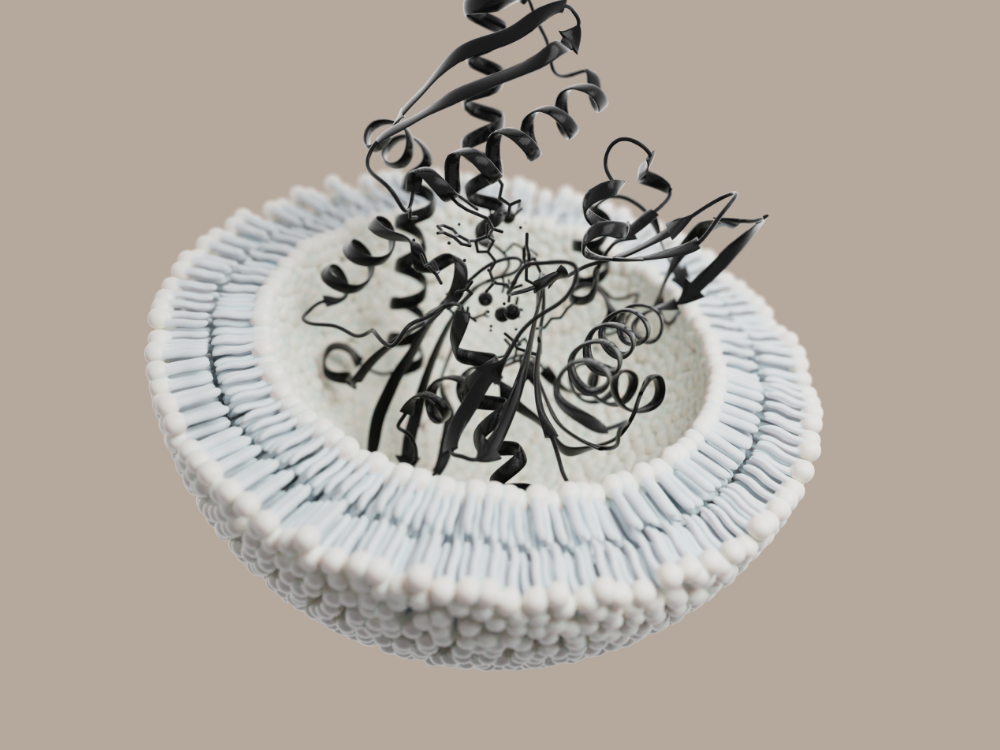Definition of exosomes
Exosomes are lipid membrane–enclosed, extremely small (nano-sized) particles that are formed within multivesicular bodies (MVBs) inside the cell and released into the extracellular space through exocytosis (transport from inside the cell to the outside). They contain a variety of biological molecules, including proteins, lipids, mRNA, miRNA, and other non-coding RNAs. Due to their specific composition, exosomes can act as “messengers” between cells, transmitting information. However, exosomes are not cells because they lack a cell nucleus.
Main characteristics
- Size: 30–150 nm
- Structure: Lipid bilayer that protects their contents from degradation
- Contents: Proteins, nucleic acids, lipids, and metabolites
- Release: Through fusion of multivesicular bodies with the cell membrane
Biological significance
Exosomes play a crucial role in various physiological and pathological processes. They act as mediators of intercellular communication and influence numerous biological functions.
Functions
- Cell communication: They transfer specific molecules such as mRNA and proteins that activate or modulate signaling pathways in target cells.
- Immune regulation: Exosomes can either activate or suppress the immune system, depending on their origin.
- Tissue regeneration: By providing growth factors and miRNAs, exosomes support tissue regeneration.
- Tumor biology: Tumor cells release exosomes that can promote tumor growth, metastasis, and immune evasion.
Pathological relevance
Exosomes play a role in diseases such as cancer, neurodegenerative disorders, cardiovascular diseases, and infections. They can act both as disease promoters and as biomarkers.
Mechanism of action of exosomes
Exosomes exert their effects through various mechanisms that depend on their specific composition and the target cell.
Mechanisms
- Endocytosis: Target cells take up exosomes through endocytosis (once the exosome touches the membrane, the membrane folds inward and the exosome enters the cell), allowing their contents to reach the cell interior.
- Receptor-mediated signaling: Exosomes can interact with specific receptors on the surface of target cells and trigger signaling cascades.
- Direct fusion: Exosomes fuse with the target cell membrane, releasing their contents directly into the cytoplasm.
Molecular components
- Proteins: Signaling proteins, enzymes, transcription factors
- RNA: mRNA and miRNA that influence the gene expression of the target cell
- Lipids: Structural and signal-mediating molecules
Production of exosomes
The production of exosomes is carried out in vitro by cultivating cells that release exosomes. The source of the cells is crucial, as it determines the composition and function of the exosomes.
Animal sources
- Mesenchymal stem cells (MSCs): Stem cells derived from bone marrow, adipose tissue, or umbilical cord are considered the main source of therapeutic exosomes.
- Blood cells: Platelets and monocytes can release exosomes that play a role in immune regulation.
- Tumor cells: Research exosomes derived from tumor cells are used to study tumor biology.
Plant-Based Sources
- Plant Extracts: Certain plants such as grapes, ginger, and lemons produce nanoparticles that are exosome-like and contain bioactive molecules.
- Production: Extraction is carried out by grinding and centrifuging plant materials.
- Advantages: Plant-derived exosomes are cost-effective, easily accessible, and biocompatible.
Isolation Methods
- Ultracentrifugation: The standard method that separates exosomes based on their density.
- Filtration and Chromatography: Additional techniques used to refine exosome purification.
- Commercial Kits: Fast and efficient, but relatively expensive.
Current Significance in Medicine
Exosomes have found a promising role in the diagnosis, prognosis, and therapy of various diseases.
Diagnostic Applications
- Biomarkers: Exosomes contain disease-specific molecules that can serve as biomarkers for cancer, Alzheimer’s disease, and cardiovascular disorders.
- Liquid Biopsies: The analysis of exosomes from blood or other body fluids is less invasive than traditional biopsies.
Therapeutic Applications
- Drug Delivery: Exosomes can be used as carriers for therapeutic molecules such as drugs, RNA, or proteins.
- Immunotherapy: Tumor-derived exosomes can be utilized as vaccines to activate the immune system.
- Tissue Regeneration: MSC-derived exosomes are applied in regenerative medicine to promote the healing of skin, cartilage, and nerve tissue.
Applications in Aesthetic and Regenerative Medicine
Exosomes have emerged as innovative tools in aesthetic and regenerative medicine.
Aesthetic Medicine
- Skin Rejuvenation: MSC-derived exosomes promote collagen production, reduce inflammation, and improve skin elasticity.
- Hair Growth: They stimulate the activation of hair follicles and reduce hair loss.
- Scar Treatment: By modulating inflammatory processes, exosomes help improve scar tissue quality and appearance.
Regenerative Medicine
- Wound Healing: Exosomes accelerate the regeneration of skin and tissue, particularly in cases of chronic wounds.
- Cartilage Regeneration: They stimulate extracellular matrix production in chondrocytes and may help alleviate degenerative joint diseases.
- Nerve Damage: MSC-derived exosomes possess neuroprotective properties and can support the regeneration of nerve fibers.
Administration Methods
- Topical Applications: Creams and serums containing exosomes for skincare.
- Injections: Direct injection into affected tissues or skin layers.
- Nanotechnology: Modified exosomes designed for targeted therapies.
Current Legal Situation in Austria and Europe
In most European countries, the use of exosomes of animal origin is still prohibited. Currently, only plant-derived exosomes are permitted, which are applied to the skin in the form of creams. I cannot, at this point, confirm their effectiveness with sufficient certainty to incorporate them into my treatment concept.
I will inform you as soon as this situation changes.
Zukunftsaussichten
- Advances in nanotechnology and bioengineering will facilitate the production and modification of exosomes.
- The combination of exosomes with other therapeutic approaches such as gene therapy and immunotherapy could open new treatment strategies.
- Their use in personalized medicine could enable more specific and effective therapies.
